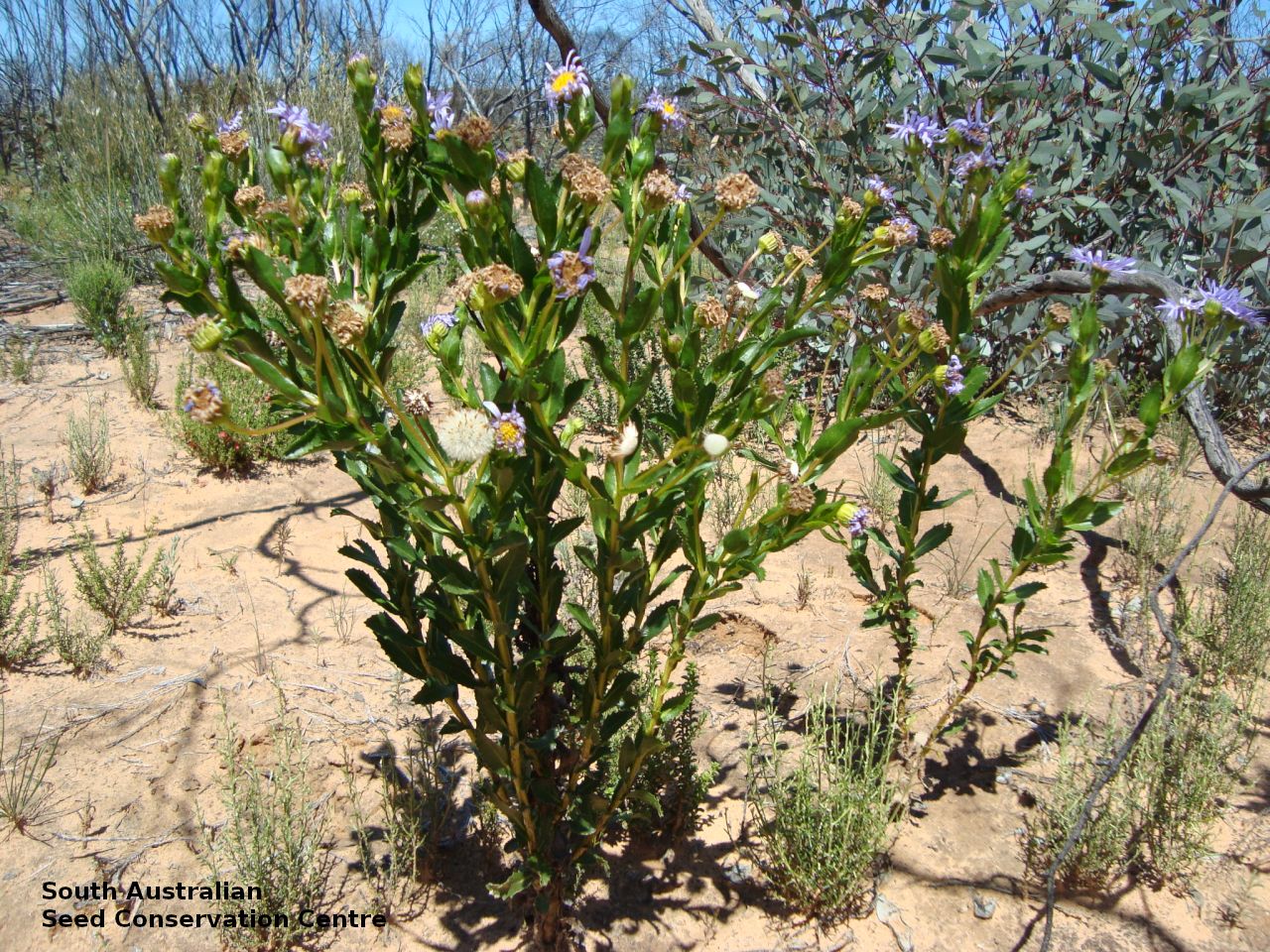
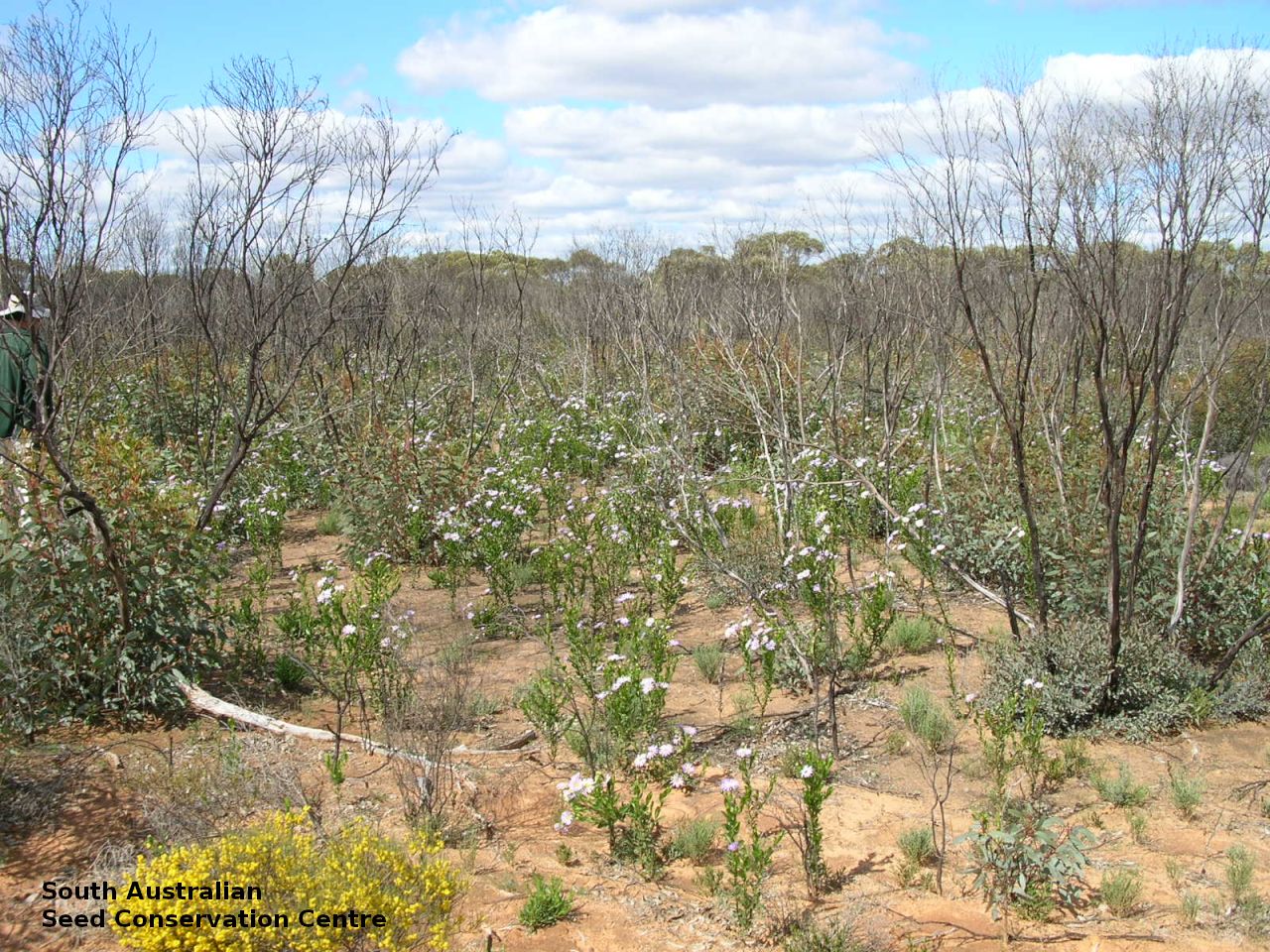
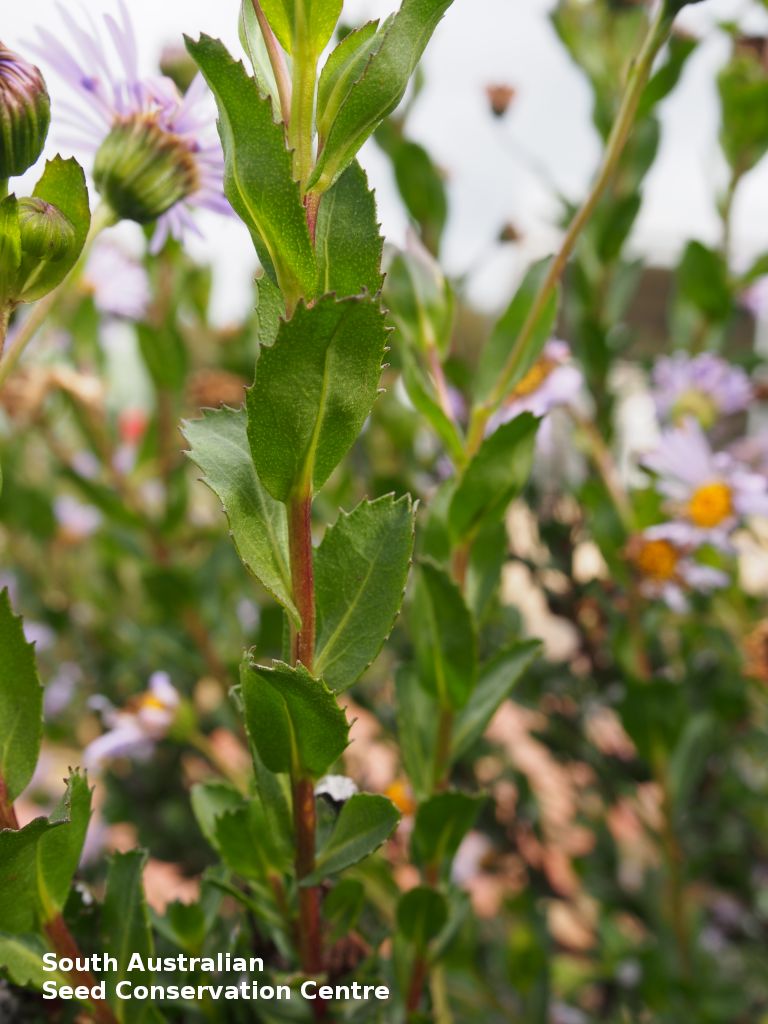
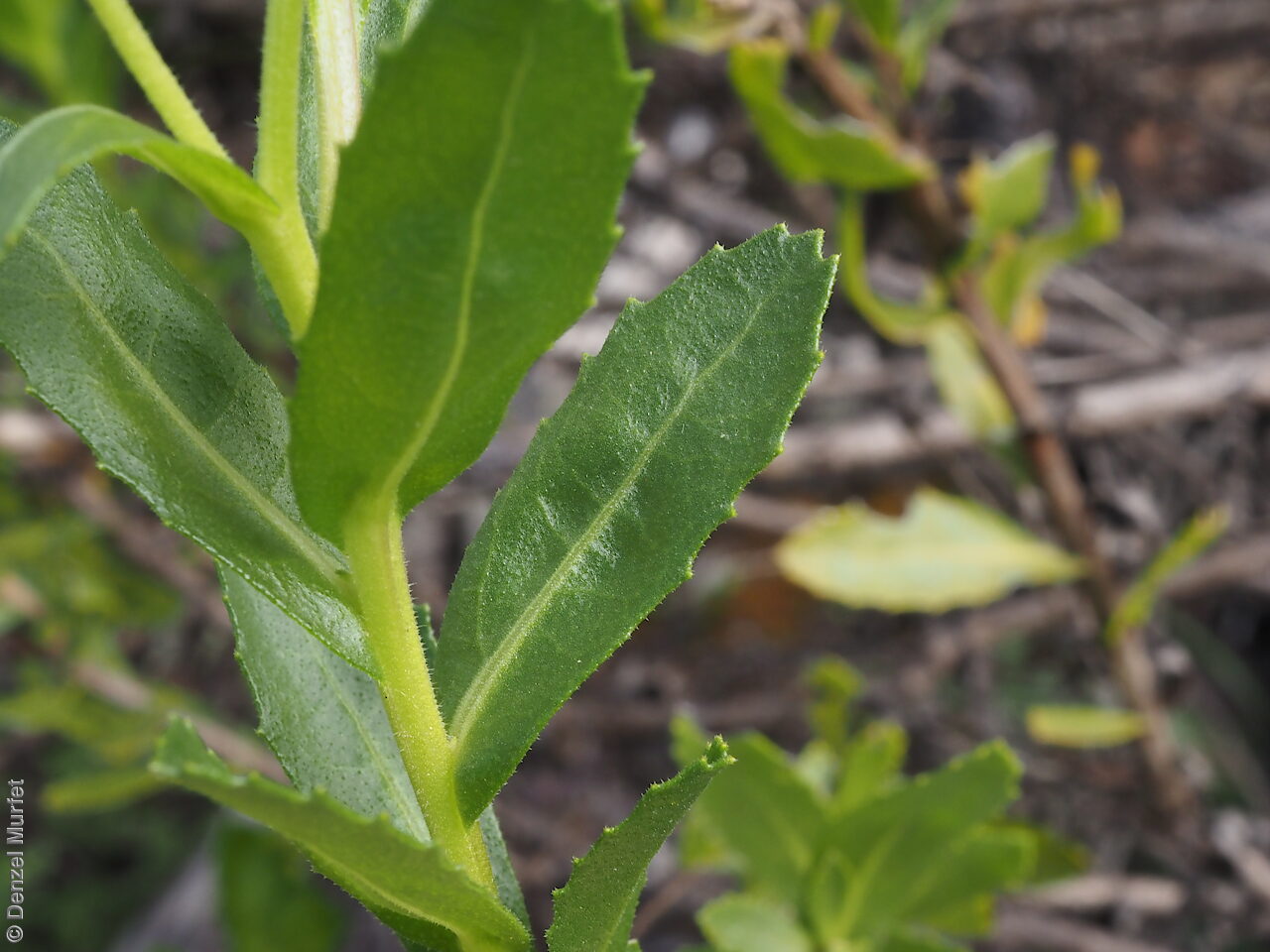

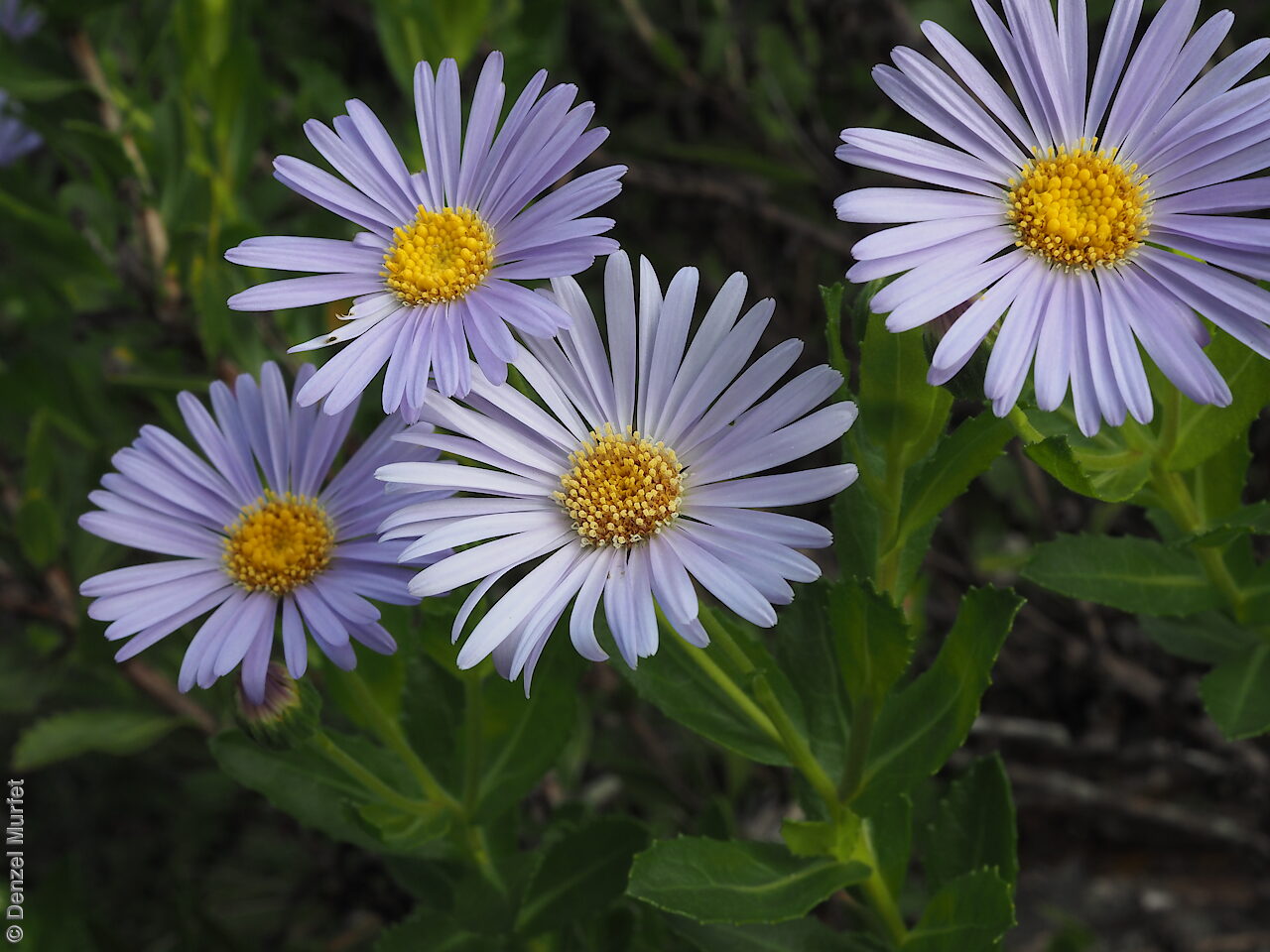
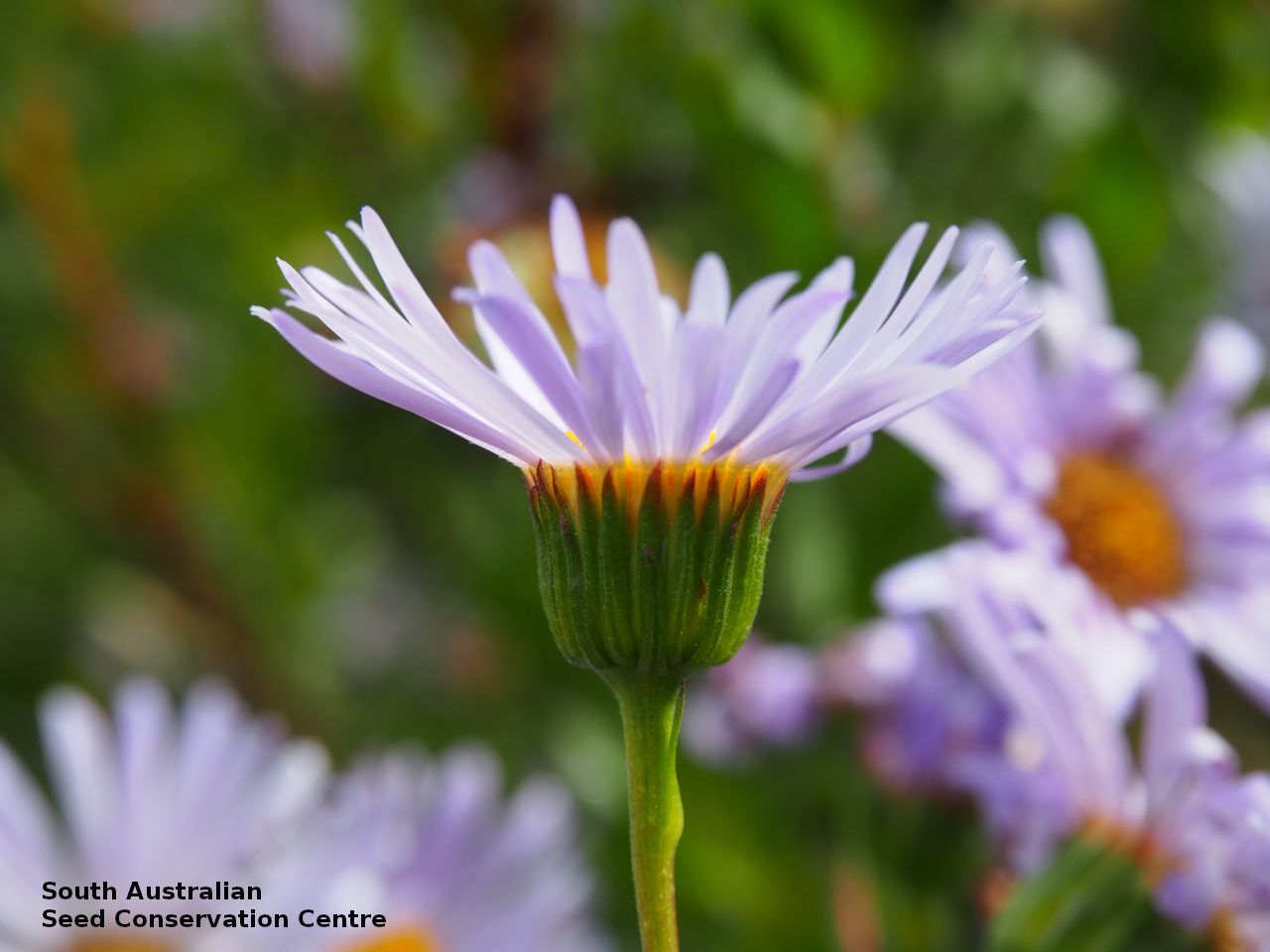
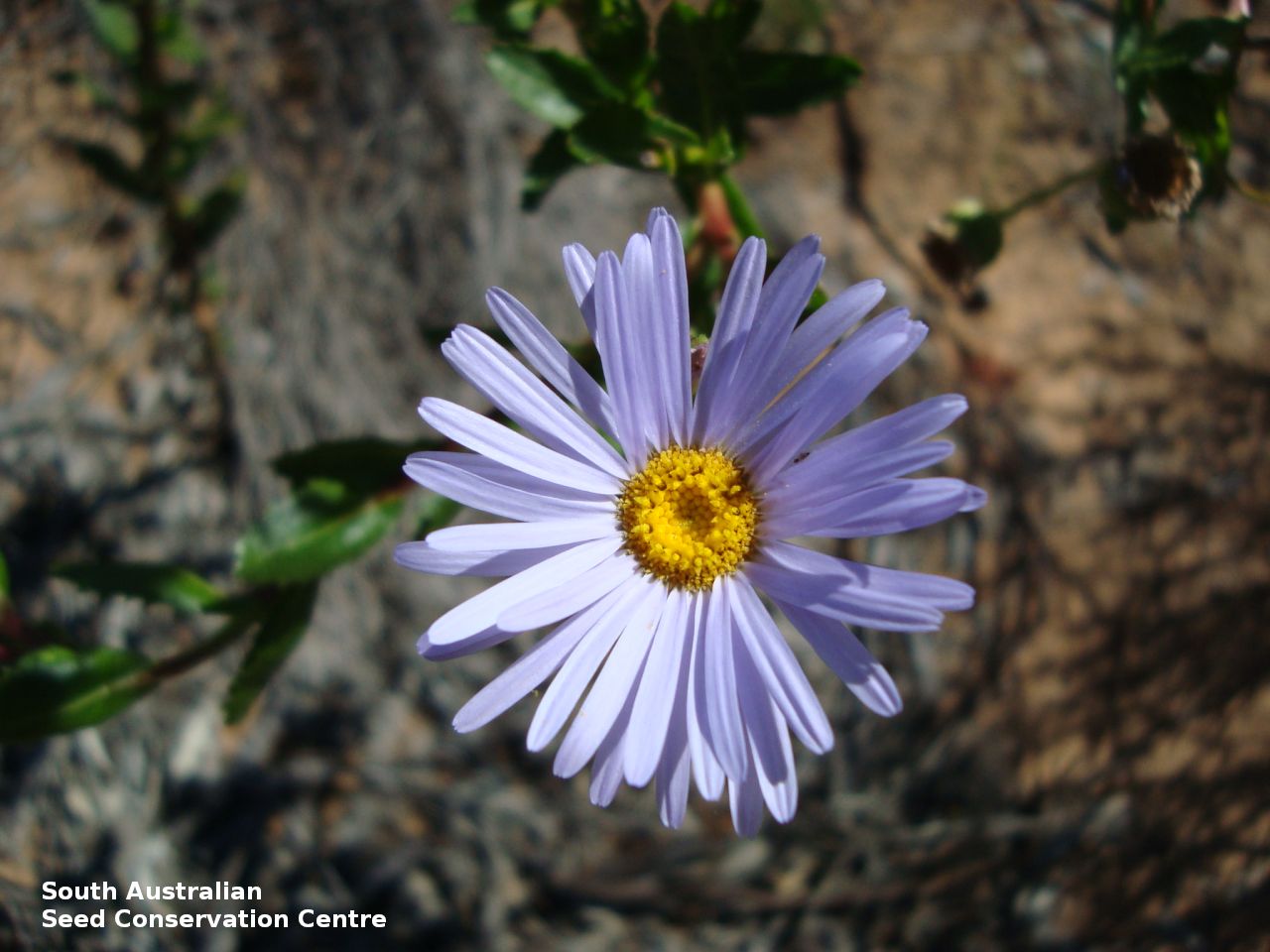
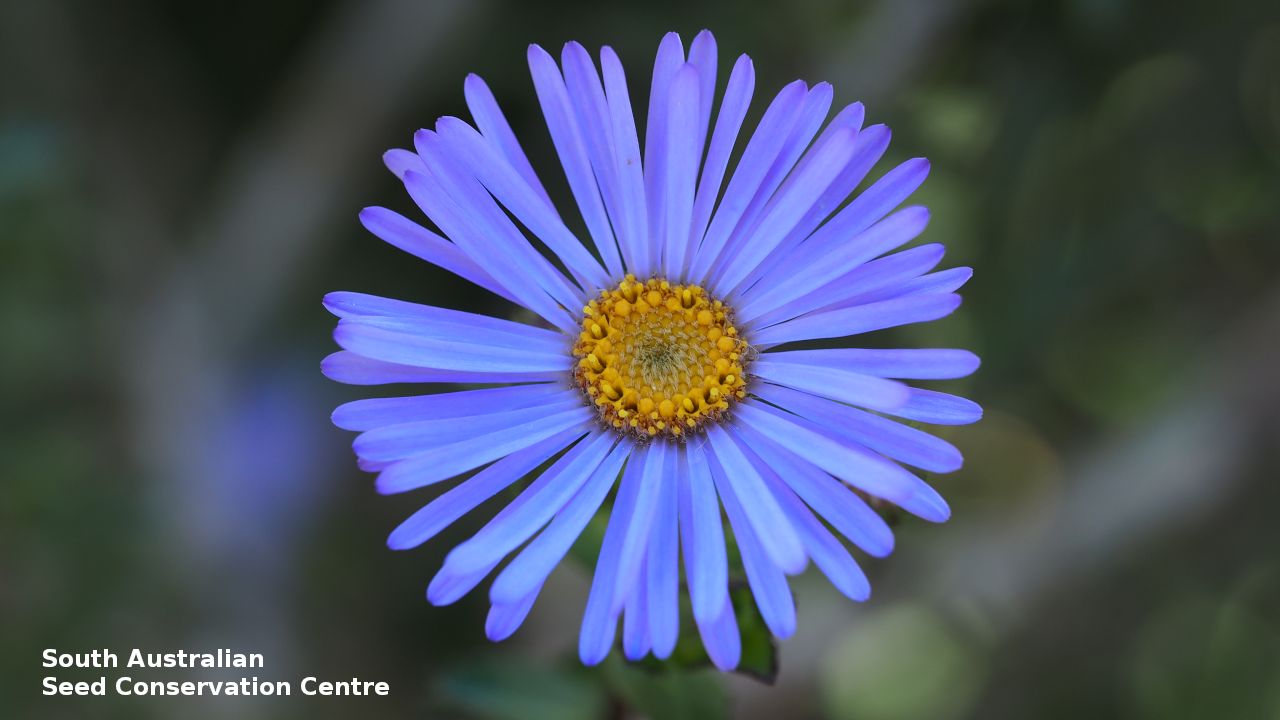
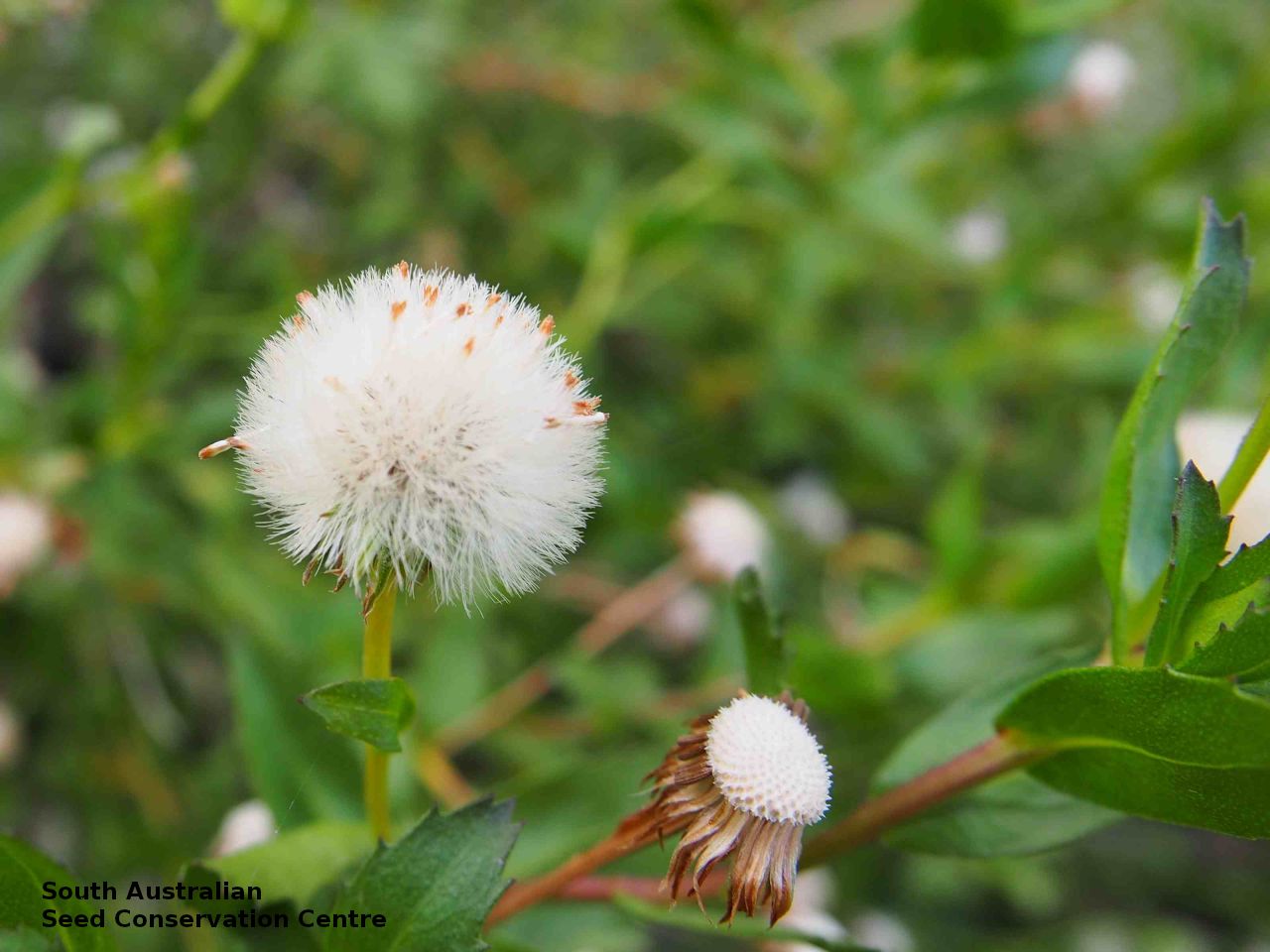
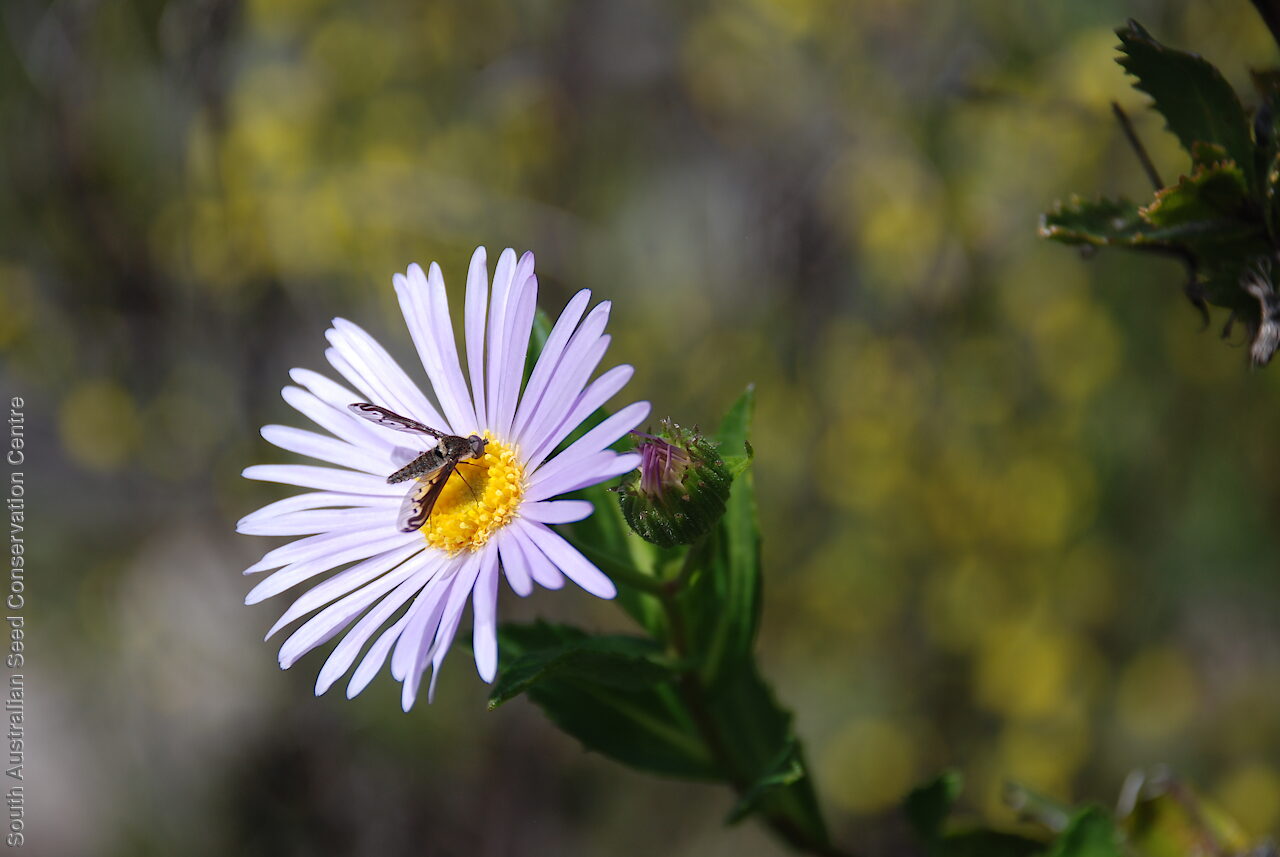
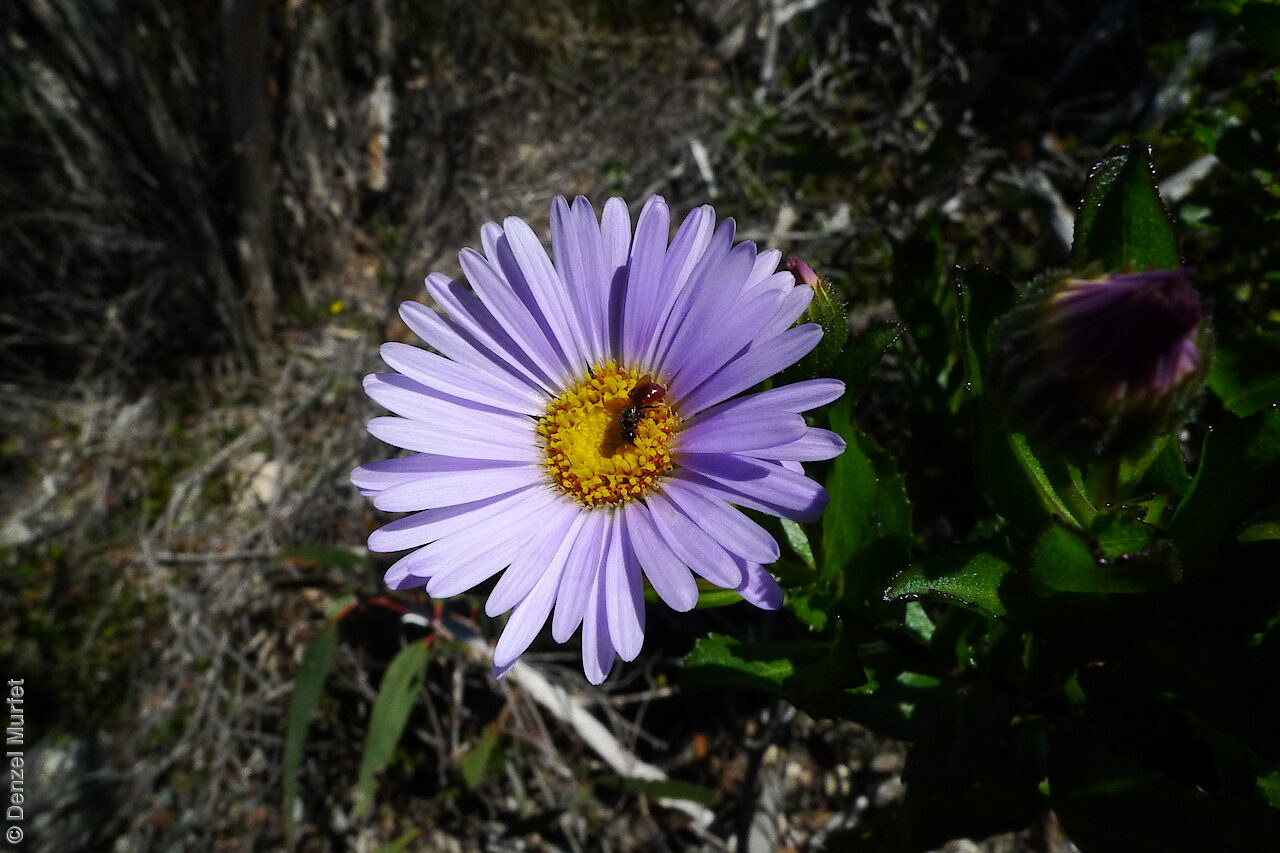
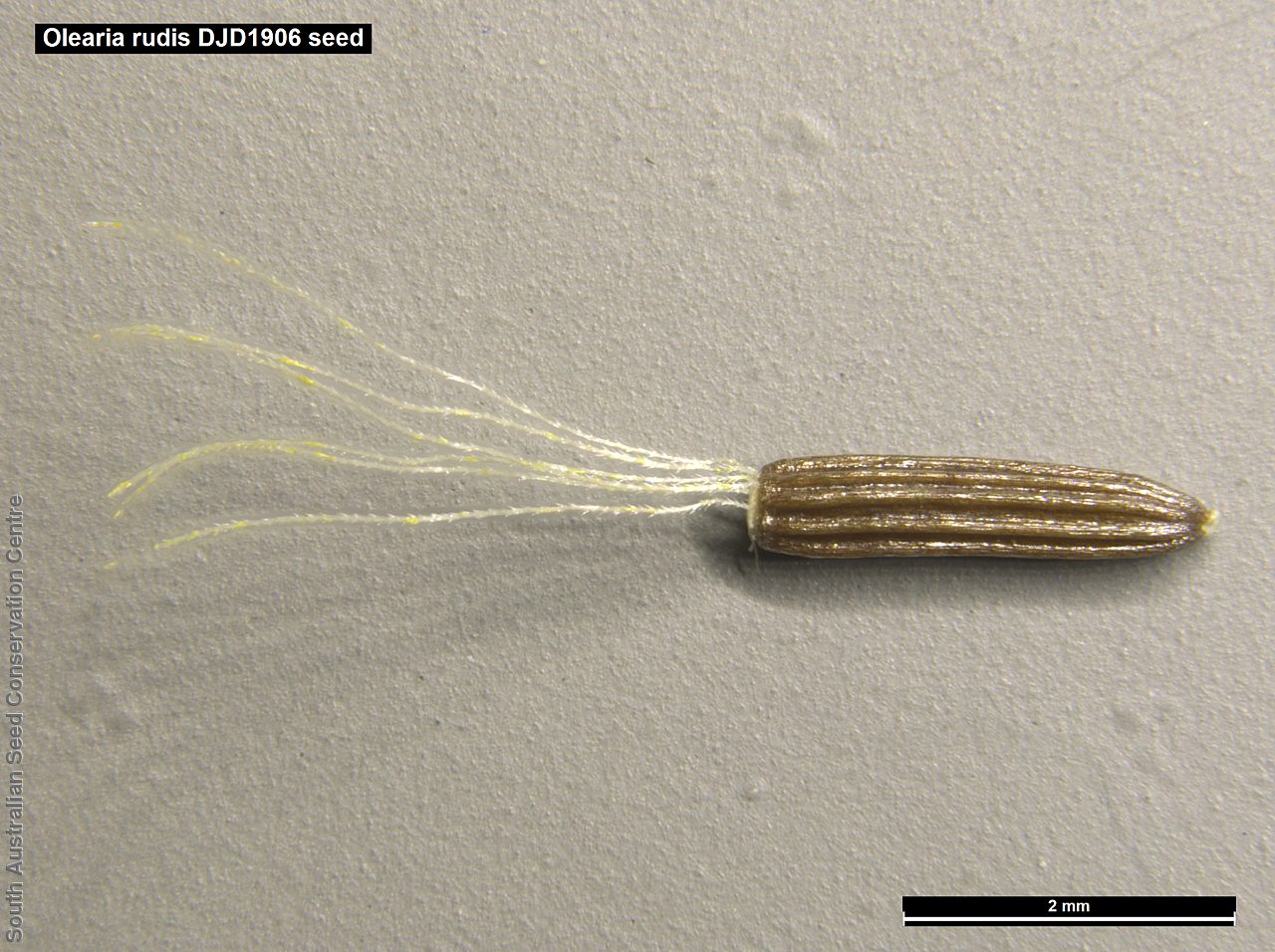
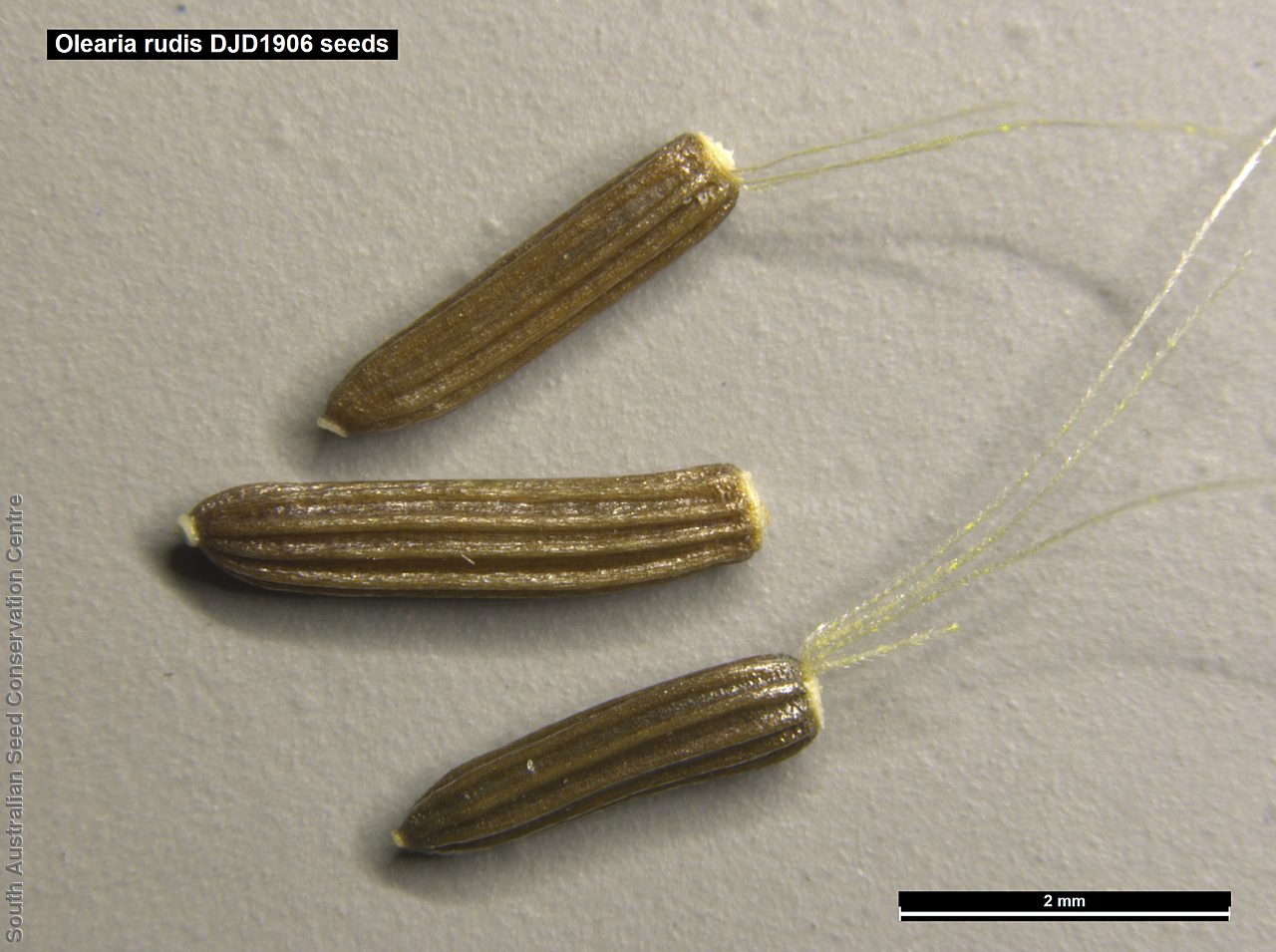
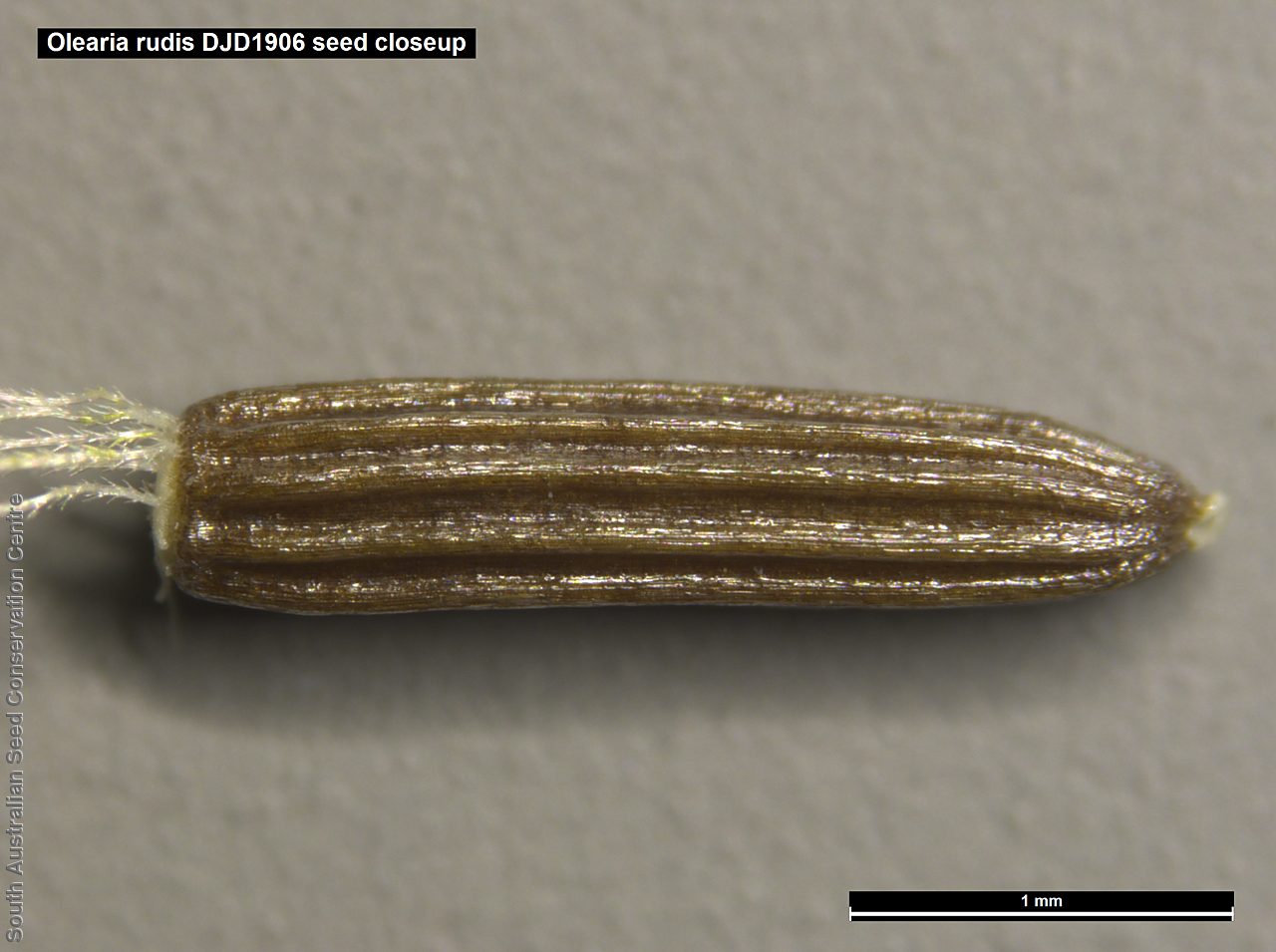

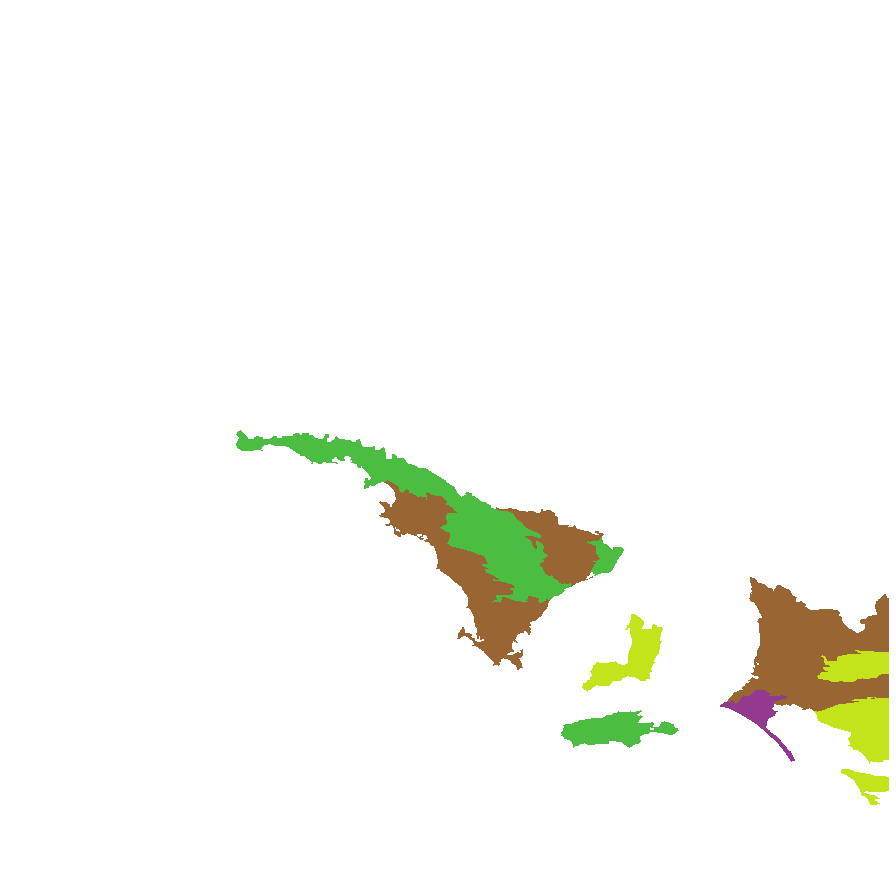
Botanical art
Prior names
Olearia rudis var. glabriuscula
Eurybia scabra
Eurybia rudis
Aster exul
Common names
Purple Daisy-bush
Azure Daisy-bush
Etymology
Latin 'olearius' pertaining to oil, from 'olea' olive and 'rudis' coarse, unformed, crude
Distribution and status
In mallee and woodland communities often on red, calcareous sand Native
Herbarium regions: Eyre Peninsula, Northern Lofty, Murray, Yorke Peninsula, Southern Lofty, Kangaroo Island
NRM regions: Adelaide and Mount Lofty Ranges, Eyre Peninsula, Kangaroo Island, Northern and Yorke, South Australian Murray-Darling Basin
AVH map: SA distribution map (external link)
Plant description
Shrub or undershrub, to 1.3 m high. Leaves alternate, crowded; lamina elliptic, obovate or ovate, 15�120 mm long, 6�40 mm wide, scabrous to glabrous, green. Capitula terminal, solitary or compound corymbs of 2-8, 20�40 mm wide. Ray florets 39�75, pale blue or mauve or purple, disc florets 86�241, orange. Flowering June - October. Fruits are achenes terete, 2-3 mm long, deeply striate, glabrous or subglabrous; pappus bristles 30-40, 5 mm long, subequal.
Seed collection and propagation
Collect seeds between October and November.
| Location | No. of seeds (weight grams) | Number of plants | Date collected | Collection number Collection location | Date stored | % Viability | Storage temperature |
|---|---|---|---|---|---|---|---|
| MSB | 3,400 (1.96 g) | 12 | 17-Oct-2006 | DJD591 Yorke Peninsula | |||
| BGA | 35,800 (22.45 g) | 50+ | 20-Oct-2010 | DJD1906 Murray | 1-Jan-2012 | 100% | -18°C |
Number of plants: This is the number of plants from which the seeds were collected.
Collection location: The Herbarium of South Australia's region name.
% Viability: Percentage of filled healthy seeds determined by a cut test or x-ray.